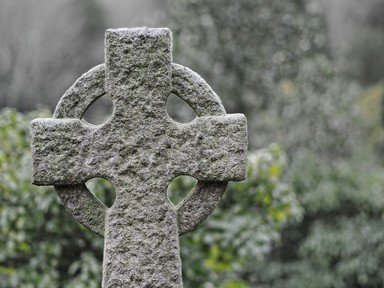
Celtic and Irish Deities Trivia Quiz
The pantheon of Celtic gods, shared with Irish, Welsh, and Scottish folklore, are the topic here. See if you can match the descriptions to the names of the Celtic/Irish deities provided. Good luck!
This is a renovated/adopted version of an old quiz by author silverkisses4uonly
A matching quiz
by kyleisalive.
Estimated time: 3 mins.